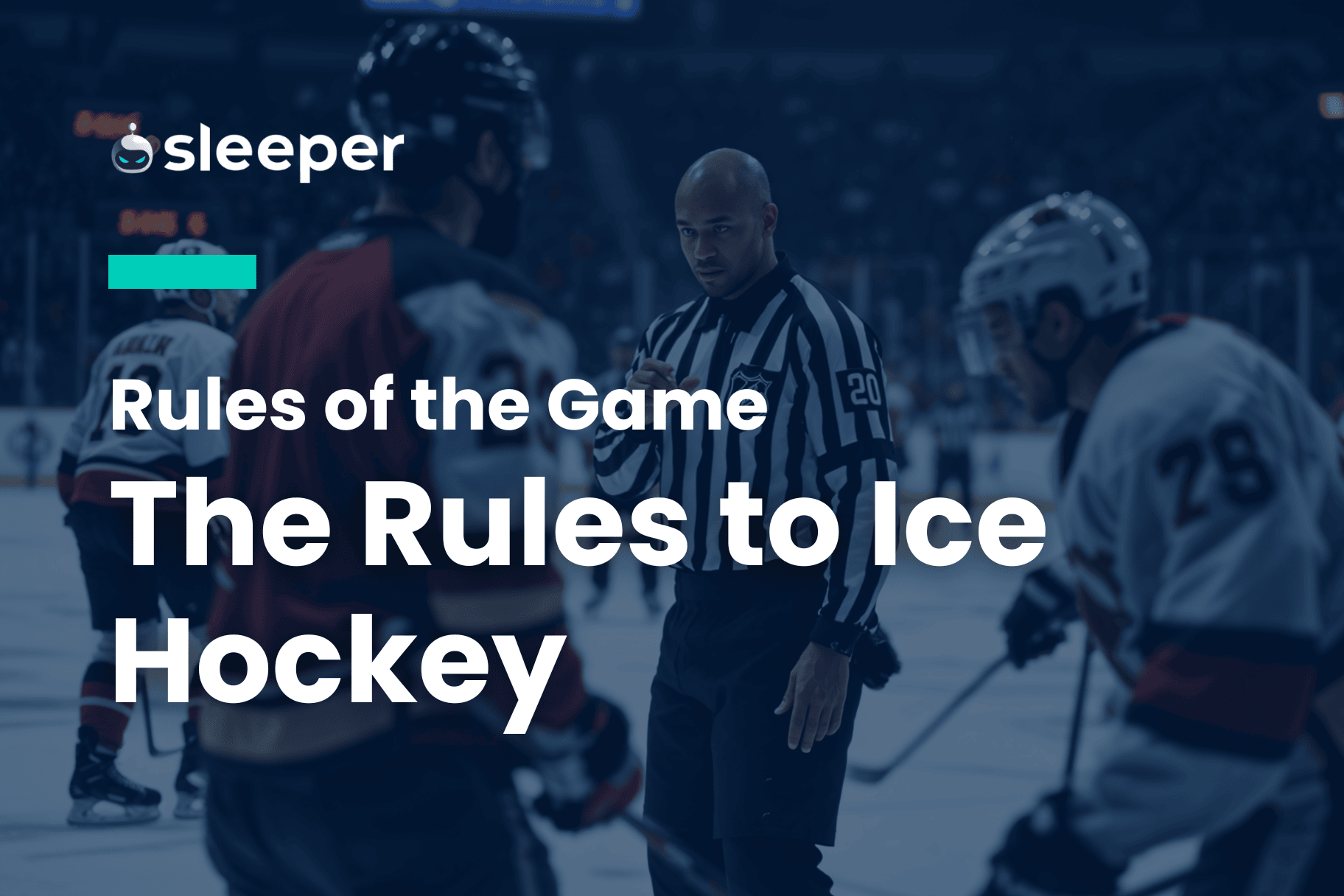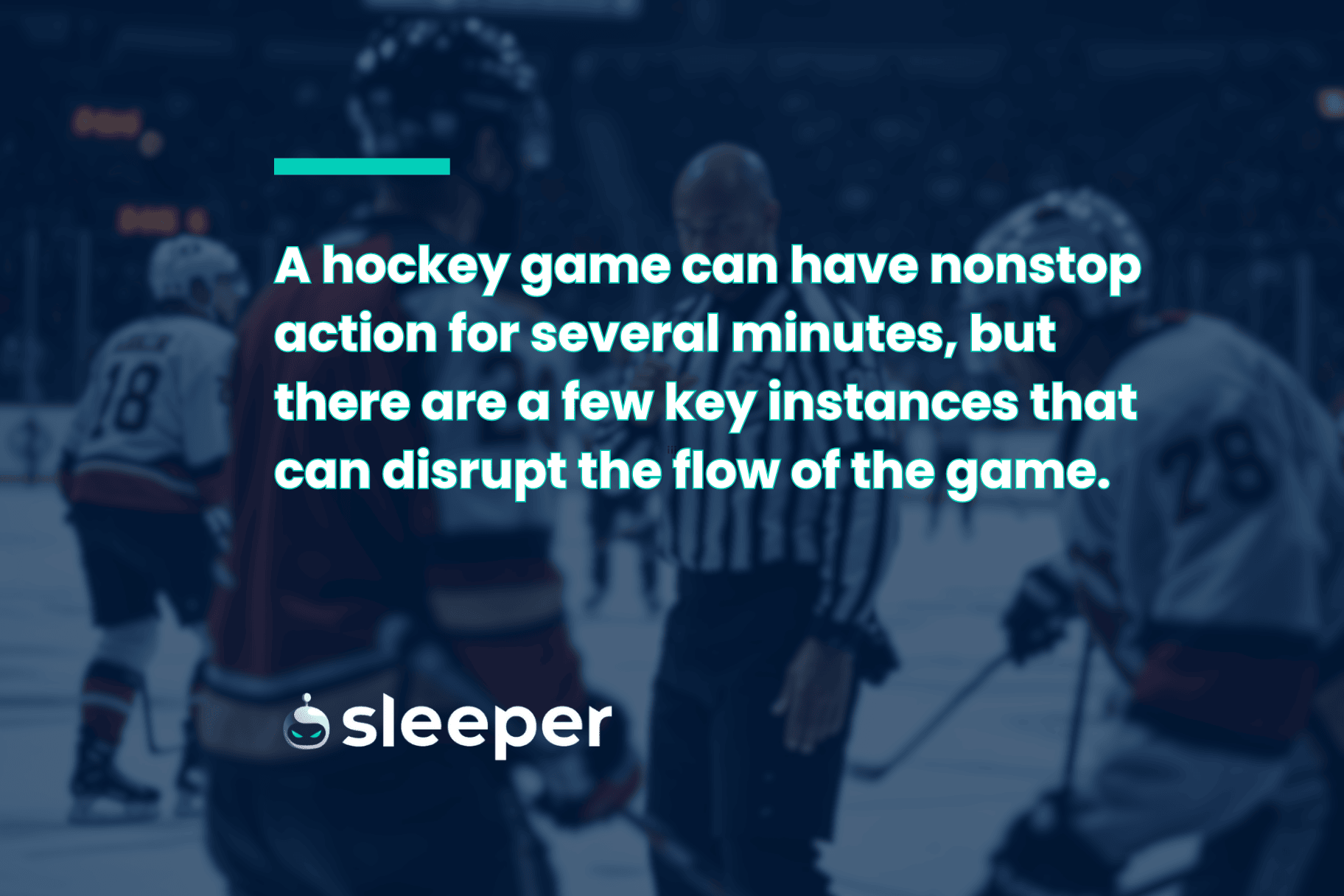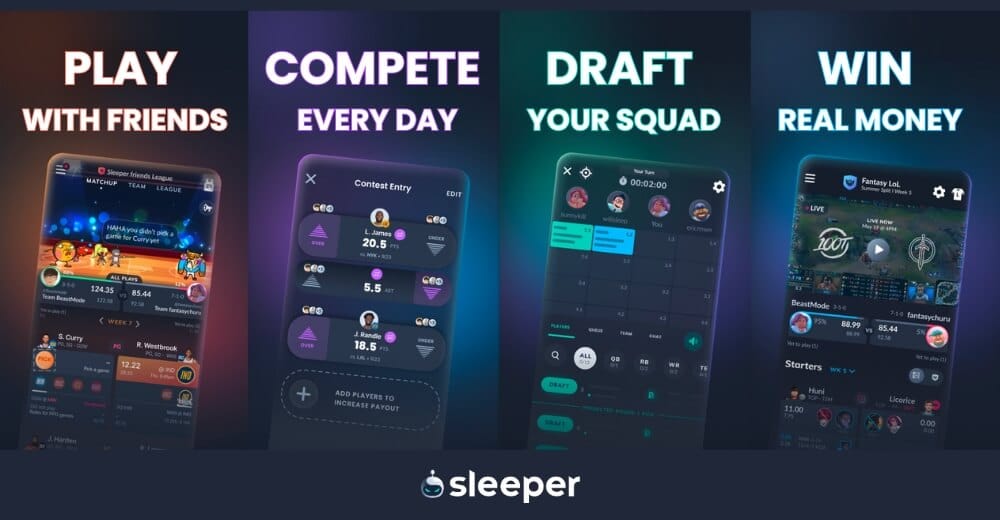Learn about the rules of ice hockey, from penalties to icing and everything in between.

If you're a wannabe ice hockey enthusiast or simply just new to one of the most exciting sports on the planet, understanding the rules of the game will significantly enhance your enjoyment of it. For fantasy hockey players, knowing the details of penalties, scoring and other rules is crucial for optimizing lineups and making strategic decisions.
This article explores everything you need to know about ice hockey rules. In it, we’ll cover the basics, delve into scoring, explain penalties and explore gameplay to help you take your fantasy hockey game to the next level. Dive in and boost your chances of victory!
Basic Ice Hockey Rules For Beginners
Hockey Game Duration
A regulation hockey game consists of three 20-minute periods for a total of 60 minutes. There is an intermission between each period to resurface the ice and for the teams to rest and recharge.
If the game is tied after 60 minutes in the regular season, the two teams will then play one overtime session. In the NHL, teams play a sudden-death, five-minute 3-on-3 overtime and then go to a shootout if neither team scores. In the Stanley Cup Playoffs, teams play 20-minute overtime periods until a team scores.
How Many Hockey Players Are There on The Ice?
There are usually six players on the ice for each team: a goalie, two defensemen, and three forwards. Teams may alter those positions depending on the state of the game.
A team can be penalized to play with four or as few as three skaters plus a goalie. For the most part, however, there are 12 total players on the ice.
Goals
A goal is scored when a player shoots, directs or deflects the puck into the net from a legal position. Players are not able to throw or bat the puck into the net with their hands, nor are they allowed to interfere with the goalie.
Goals can be disallowed if a player touches the puck with a high stick, there is goaltender interference or a player directs the puck into the net via a distinct kicking motion with a skate.
Penalties
There are different levels of penalties depending on the severity of the infraction.
Minor Penalties
A minor penalty is a two-minute infraction served by the player who commits the foul. If a goalie commits a minor penalty, one of the team’s skaters serves the two minutes in the penalty box.
A “bench minor” can also be called on a team for too many men on the ice. In this case, the head coach decides which player serves the penalty.
Some of the most common minor penalties include tripping, hooking, roughing, interference, slashing, holding and high-sticking. Players who are called for these infractions are given a two-minute minor penalty.
A player can also be assessed for a “double minor,” which is most commonly called for high-sticking if the opponent is bleeding. A player serves a double minor back-to-back with up to four minutes in the penalty box.
Major Penalties
The most common major penalty is for fighting. If two willing combatants drop the gloves, they are usually each issued a five-minute major penalty. This does not impact how many players are on the ice.
Major penalties can also be assessed to just one player if it is a particularly egregious foul. These can be for charging, slashing, high sticking or other infractions. A player must serve all five minutes in the penalty box for a major penalty, giving the opposing team a long power play.
Misconduct Penalties
A misconduct penalty is typically issued against a single player and does not affect the number of skaters on the ice.
Misconduct penalties can be called for unsportsmanlike behavior or instigating, and sometimes are issued along with a major penalty for a particularly dangerous hit.
Gameplay and Flow
A hockey game can have nonstop action for several minutes, but there are a few key instances that can disrupt the flow of the game.

Icing
Icing in hockey occurs when a player is on his own side of the red line at center ice and sends the puck past the opposing goal line. Icing is not called if the player has already reached the red line, if the goalie makes an effort to play the puck, or if an official judges that a player could’ve played the puck prior to it crossing the goal line.
After icing the puck a team must quickly defend with a face-off in their own zone. It gives the opposition a notable advantage as they can change players while the team that iced the puck can not.
Faceoffs
A faceoff is one of the most important plays in hockey. It starts a game and is used to restart action after every stoppage.
Each team lines up for the faceoff with the centers at the dot and the wingers on opposite sides.
Offsides
Offsides is one of the more confusing rules in hockey. It is called if a player precedes the puck into the offensive zone by crossing the blue line.
A player is not offsides if they entered the zone with possession of the puck, even if they are fully in the zone before the puck.
Offsides is also not called if the defending team directs the puck back into its own zone.
See also:
- How To Read Hockey Stats: A Complete Guide
- What Is a Point in Hockey? Point vs. Goal Explained
- Hockey Positions Explained: What Are Their Roles?
Fantasy Advice for Hockey Beginners
Understanding ice hockey rules is one of the basic fundamental for fantasy players and fans alike. Some fantasy hockey leagues use penalty minutes (PIM) as a category - either positively or negatively - and teams with good centermen can possess the puck more off of face-offs.
Knowing which players and teams score the most and commit the most penalties, along with the rest of the hockey rules, will greatly improve a fantasy hockey strategy and chances of winning.
Frequently Asked Questions
How Many Periods Are There In Hockey?
There are three periods in hockey with each lasting 20 minutes. An overtime period is then played if the game remains tied.
What Can’t You Do in Ice Hockey?
There are plenty of things that you can’t do in ice hockey that will result in a penalty. This includes tripping, hooking, slashing or roughing an opposing player. You are also not allowed to throw the puck into the net or interfere with the opposition.
How Many Times Can a Player Fight?
A player will be issued a game misconduct if they fight three times in a game. They are allowed to fight a maximum of two times per contest. It’s one of hockey’s idiosyncrasies.
What Is a Power Play in Hockey?
When a team has a player sent to the penalty box, it sets up the opposition for a power play, when they have a numerical advantage on the ice. If it’s for a minor penalty, the power play will end prior to the expiration of the penalty clock if the team with the advantage scores a goal. If it’s for a major penalty, the duration of the penalty will be served regardless (unless it’s in an overtime period, because the game will end on the spot). Teams down a man occasionally score despite the opposition being on a power play. That’s called a shorthanded goal.
Make Sleeper Your Go-To Source for Hockey News!
Stay updated with the latest news and hockey results on Sleeper. Sign up on the website or by downloading the app to stay plugged in on all the latest happenings around the NHL today.




